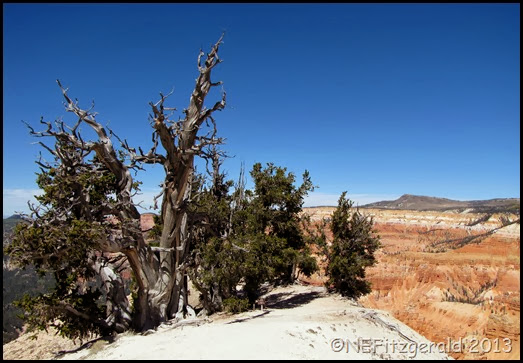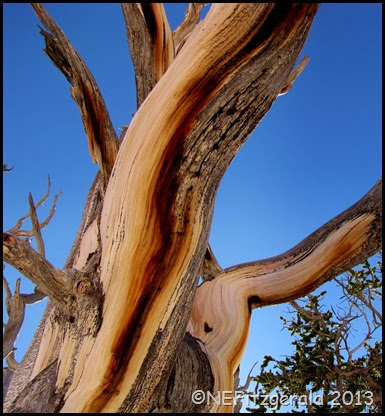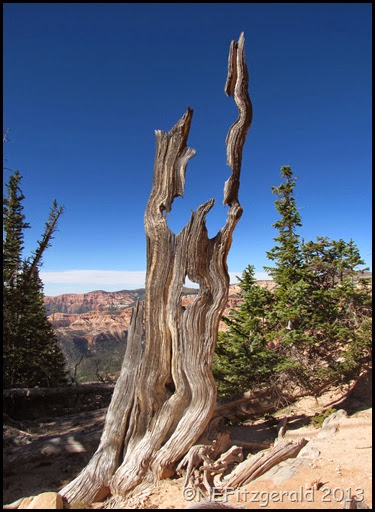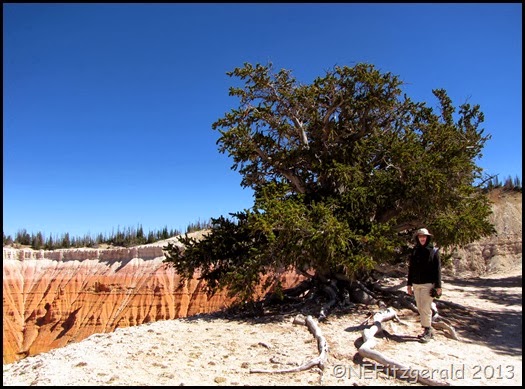In these final days of 2013 we have come to post number nine in my series “Twelve months in thirteen days.” I have always wanted to do this – to post a remembrance once each day at the end of the year, for each month of this year, remembering people, places, and rocks I have gotten to know better in 2013.
If I had to vote for one tree to be considered a symbol of Cedar Breaks National Monument, it would be the Great Basin bristlecone pine. In the crumbling limestone and dolomite cliffs at the edge of an eroding natural amphitheater, these trees not only survive but thrive in their barren windswept environment.
 |
| Bristlecone pines at Cedar Breaks National Monument in southern Utah |
I drove up to Cedar Breaks late this past September after I got home from Yellowstone (and wrote about it here) before the snow started falling and the road through the monument was closed to cars. At this time of year, hiking buddy Judy and I had the Spectra Point trail and bristlecone groves practically to ourselves.
Great Basin bristlecone pines (Pinus longaeva) are a member of a group of pines with five needles called foxtail pines. They have been found growing in isolated groves at and just below the tree line in Utah, Nevada, and California. Because of the cold temperatures, dry soils, high winds, and short growing season at tree line the bristlecone grows extremely slowly.
 |
| Bristlecones find a home at the edge of the amphitheater at Cedar Breaks |
This species of white pine is extraordinarily well suited to its harsh environment. Most stands of Great Basin bristlecone pines are found at elevations between 9,000 and 11,500 feet above sea level. Each tree grows in the open, widely separated from its neighbor, and benefits from this separation because then there is very little competition in the nutrient–poor limestone and dolomite soils. Fire caused by lightning strikes is not an issue because the spacing of the trees and lack of other ground cover vegetation impedes the spread of flames.
 |
| A thin strip of living tissue connects roots to branches in older trees |
The oldest bristlecone in Cedar Breaks is more than 1600 years old. In the bristlecone pine forests of the White Mountains of eastern California a bristlecone has been found to be 5,063 years old. Its exact location is kept secret, since an older specimen, nicknamed “Prometheus”, was cut down in 1964. Needles on some trees can be 45 years old.
 |
| A window in time |
 |
| Bristlecone Judy |
As the tree ages, much of the vascular system (which helps the plant grow) may die. So, in very old specimens, often only a narrow strip of living tissue connects the roots to a handful of live branches. This is where the trees get their long life. It is the oldest known non–clone tree species in the world. And although they are quite common in their harsh environment, ancient bristlecones are protected by law. In Cedar Breaks the trees have special protection as part of the national park system.
 |
| Bristly cones! |
There is a sense of calm associated with being among these old, old trees. They are reassuring in their endurance, and they have found their place in the world.







